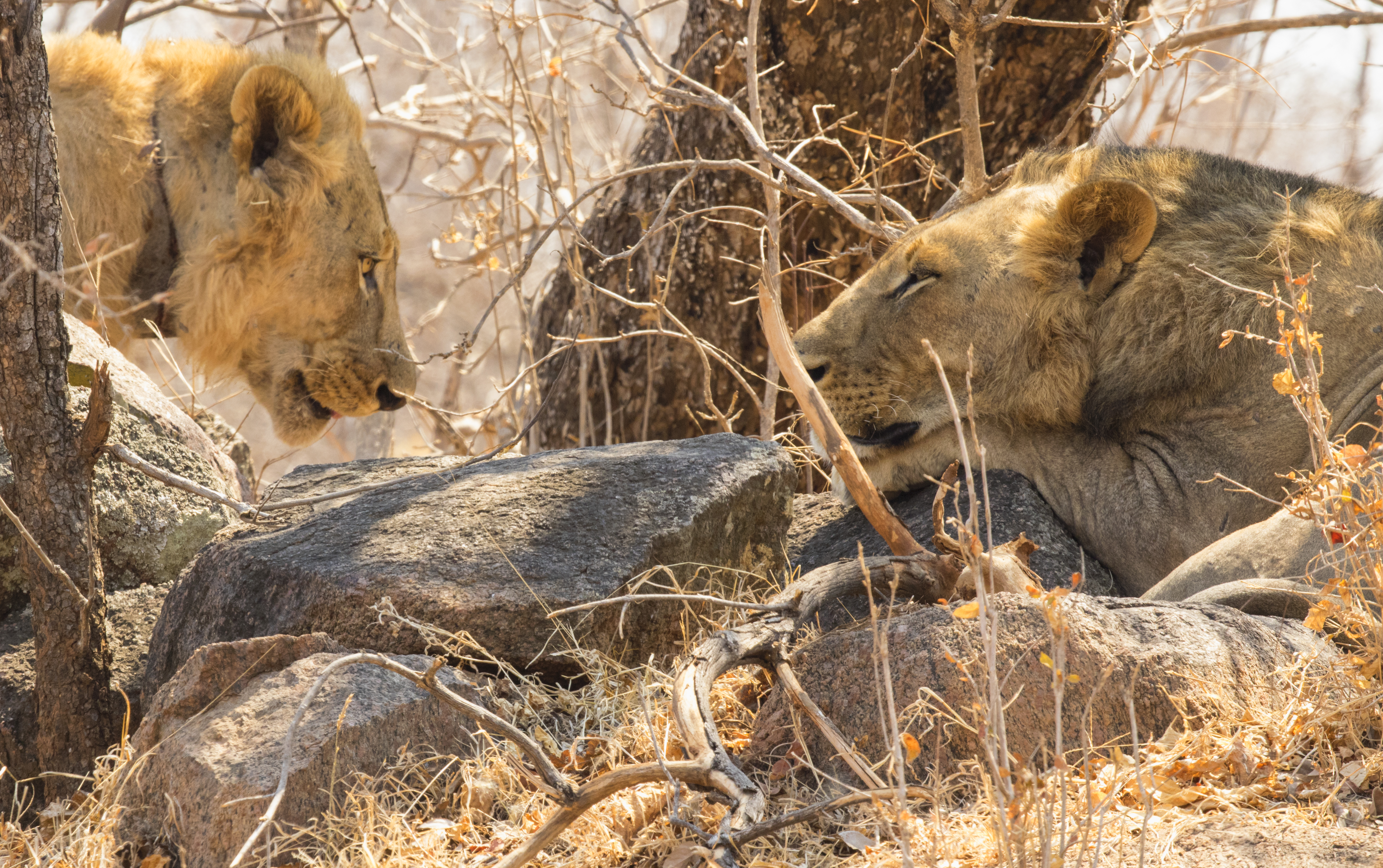More than a century ago, two male Tsavo “man-eating” lions killed at least 28 people in a period of about nine months. New DNA sequencing using tiny hairs carefully removed from the broken teeth of lions has shown that the predators ate humans, buffaloes, giraffes and more. The findings are detailed in a study published on October 11 in the journal Current Biology.
The story of Tsavo ‘cannibals’
In 1898, a group of bridge builders camped on the Tsavo River in Kenya. From March to December, two large and manless male lions hunted the pack. Some nights, they would enter the camp and drag their victims out of their tents. They are responsible for at least 28 deaths. The construction engineer of the project, Lt. Col. John Henry Patterson, finally shot the lions and sold their carcasses to the Field Museum of Natural History in Chicago in 1925.
[Related: Man-eating lions might like us because we’re squishy.]
In the early 1990s, Field Museum collection manager Thomas Gnoske removed lion skulls from storage to look for more evidence of what they ate. This new test helped him to find that the lions were fully grown males – despite the fact that none had a mane. Gnoske also noted that thousands of broken and matted hairs had built up in the exposed cavities of the lions’ teeth during their lifetime.
In a 2001 study, Gnoske and Julian Kerbis Peterhans, a biologist at Roosevelt University and an adjunct curator at the Field Museum, described the damaged condition of the teeth and the presence of hair inside them. Examination of the hair showed that it ate eland, impala, oryx, polcupine, warthog and zebra.

Hair splitting
In this new study, Gnoske and Peterhans worked together with a team from Kenya and the University of Illinois to examine some of the hair. Co-authors Ogeto Mwebi of the National Museums of Kenya and Nduhiu Gitahi of the University of Nairobi, conducted a small analysis of the hair. University of Illinois researcher Alida de Flamingh led the genomic research of hair, along with professor of anthropology Ripan S. Malhi.
The team looked at a separate sample of each of the four hairs and three tufts of hair taken from the lions’ teeth. de Flamingh first looked for common signs of age-related decay in the remnants of nuclear DNA in the hairs of lions’ teeth.
“To confirm the authenticity of the sample we are analyzing, we look to see if the DNA has these patterns that are often found in ancient DNA,” de Flamingh said in a statement.
The samples were confirmed and de Flamingh focused on mitochondrial DNA (mtDNA). The mitochondrial genome is inherited from the mother of humans and other animals. This makes it useful for tracing matrilineal generations through time.
According to the researchers, there are many advantages of focusing on mtDNA in hair. Previous studies have found that hair structure preserves mtDNA and protects it from contamination. MtDNA can also be much more abundant than the nuclear DNA found in cells.
De Flamingh said: “Since the mitochondrial genome is much smaller than the nuclear one, it is easier to reconstruct it in potential target species.
The team built a database of mtDNA profiles of the lion’s potential prey species. They then compared this to a database of references containing mtDNA profiles taken from hairs on the lion’s teeth.
[Related: Lion brothers take risky swim across crocodile-infested channel.]
“We were even able to find DNA in parts that were shorter than your fingernail,” de Flamingh said.
“Typically, when people want to get DNA from hair, they will focus on the follicle, which will have more nuclear DNA in it,” Malhi said in a statement. But these were hairline scraps that had been around for over 100 years.
Based on this hair DNA analysis method, the team found giraffe, human, oryx, waterbuck, buffalo and zebra as prey. They also pointed to hair from lions. The lions had eaten at least two giraffes, as well as a zebra that may have come from the Tsavo region.
The lions also share the same type of maternal mitochondrial gene, supporting earlier theories that they were siblings. Their mtDNA was also consistent with a Tanzanian or Kenyan origin.
Surprised to find out
Chicken mtDNA was a surprise. In the 1980s, the nearest lion population was about 50 kilometers away. However, historical reports said that lions would leave the Tsavo region about six months before they continue to hunt at the bridge camp. Another surprise was the absence of buffalo DNA and the presence of only a single buffalo hair. For Tsavo lions today, buffaloes are their favorite prey.
[Related: America used to have its own lions. Where did they go?]
“Colonel Patterson kept a handwritten journal during his time in Tsavo,” Peterhans said in a statement. But he never reported seeing buffalo or native cattle in his journal.
Cattle and buffalo in this part of Africa at this time were destroyed by rinderpest. This highly contagious viral disease was brought to the continent from India in the early 1880s. According to Peterhans, rinderpest all but wiped out cattle and their wild relatives.
Human influence
Scientists have refused to describe or analyze the human hair found in lions’ teeth further.
“There may be descendants still in the area today and using responsible and ethical science, we use community-based methods to expand the human dimensions of the larger project,” the group said. wrote.
These new findings increase the types of data that can be extracted from skulls and hair from the past. Since there were thousands of different types of hair embedded in the lions’ teeth, further analysis will allow scientists to at least change their diet and possibly find out when their habit of hunting people started.
#lions #ate #people #bulls